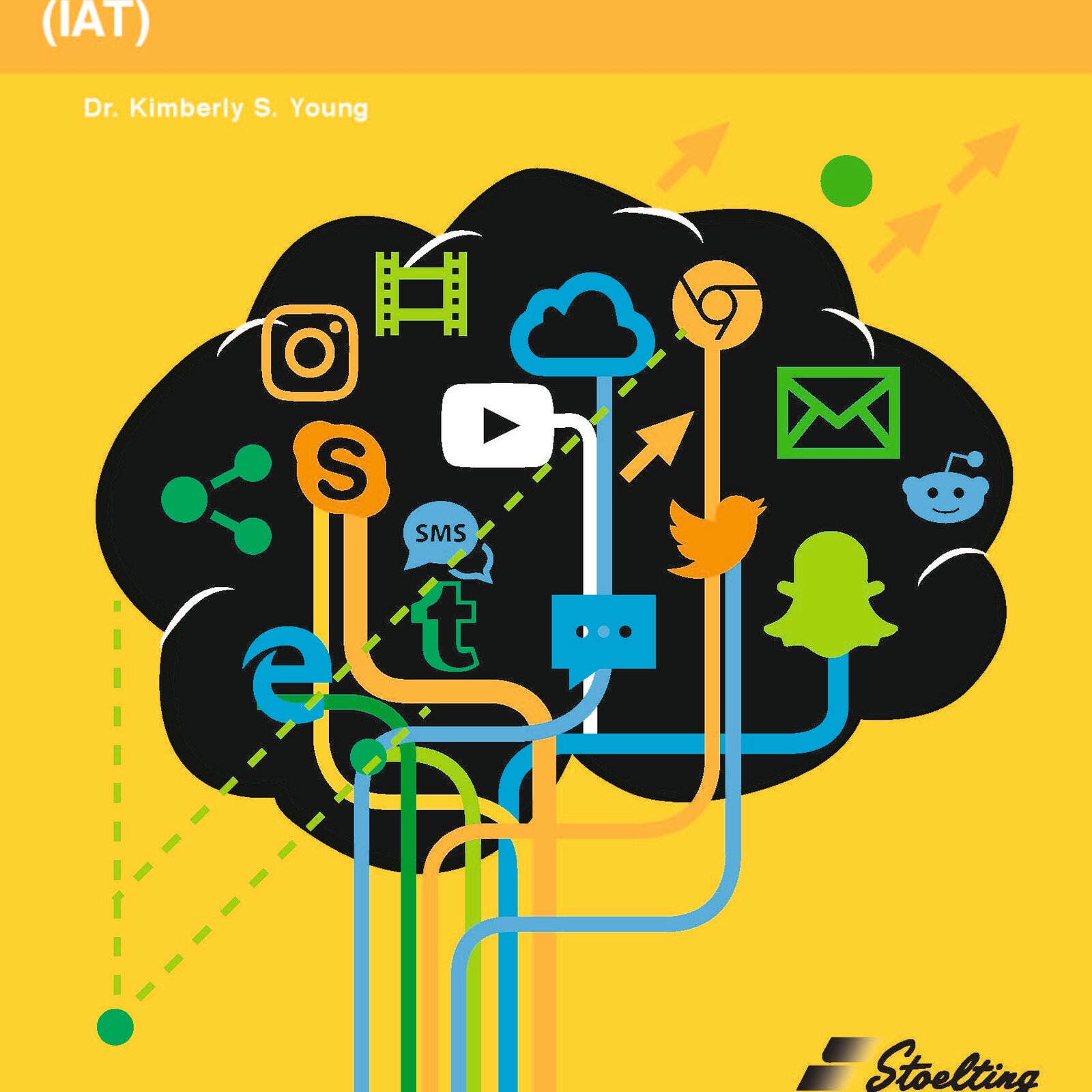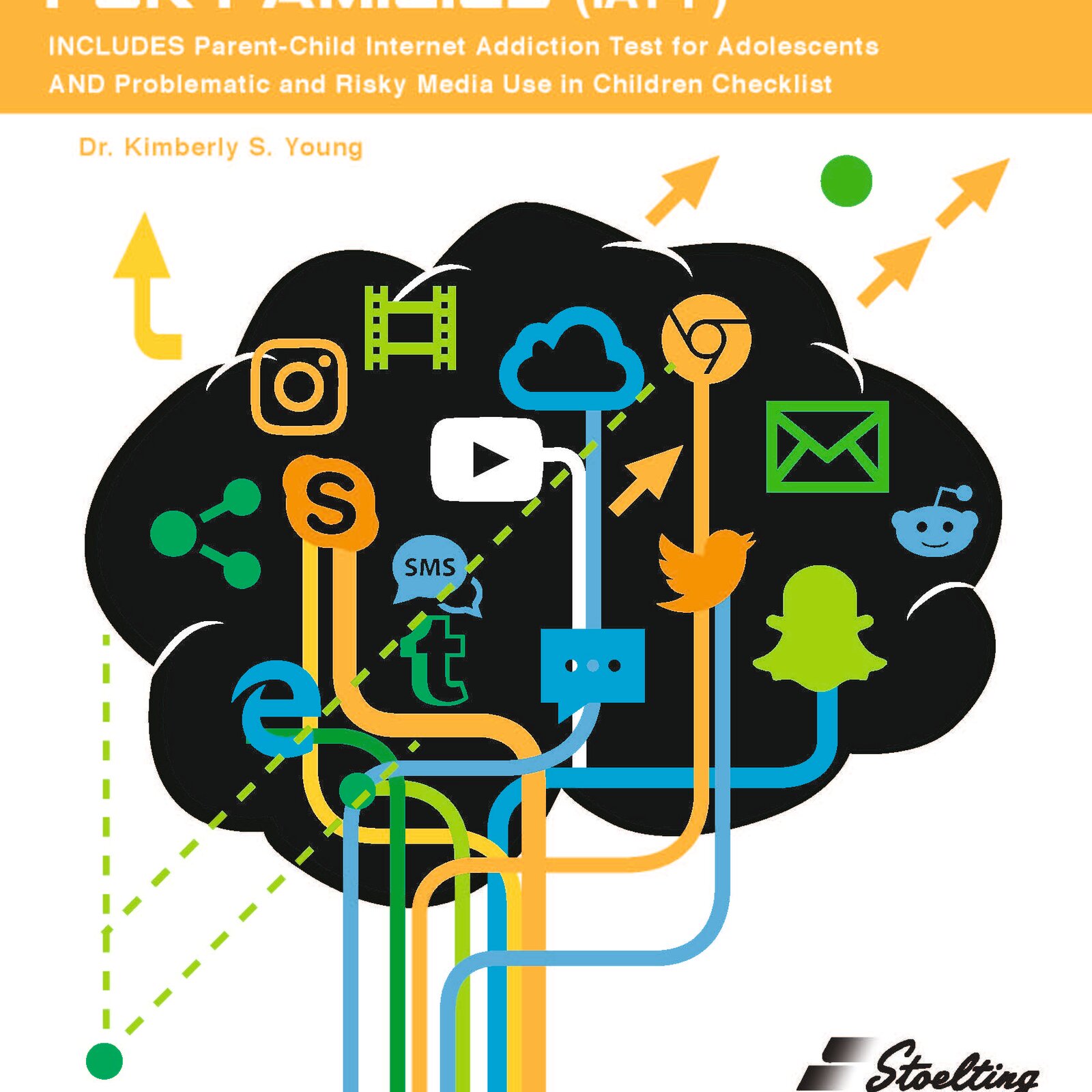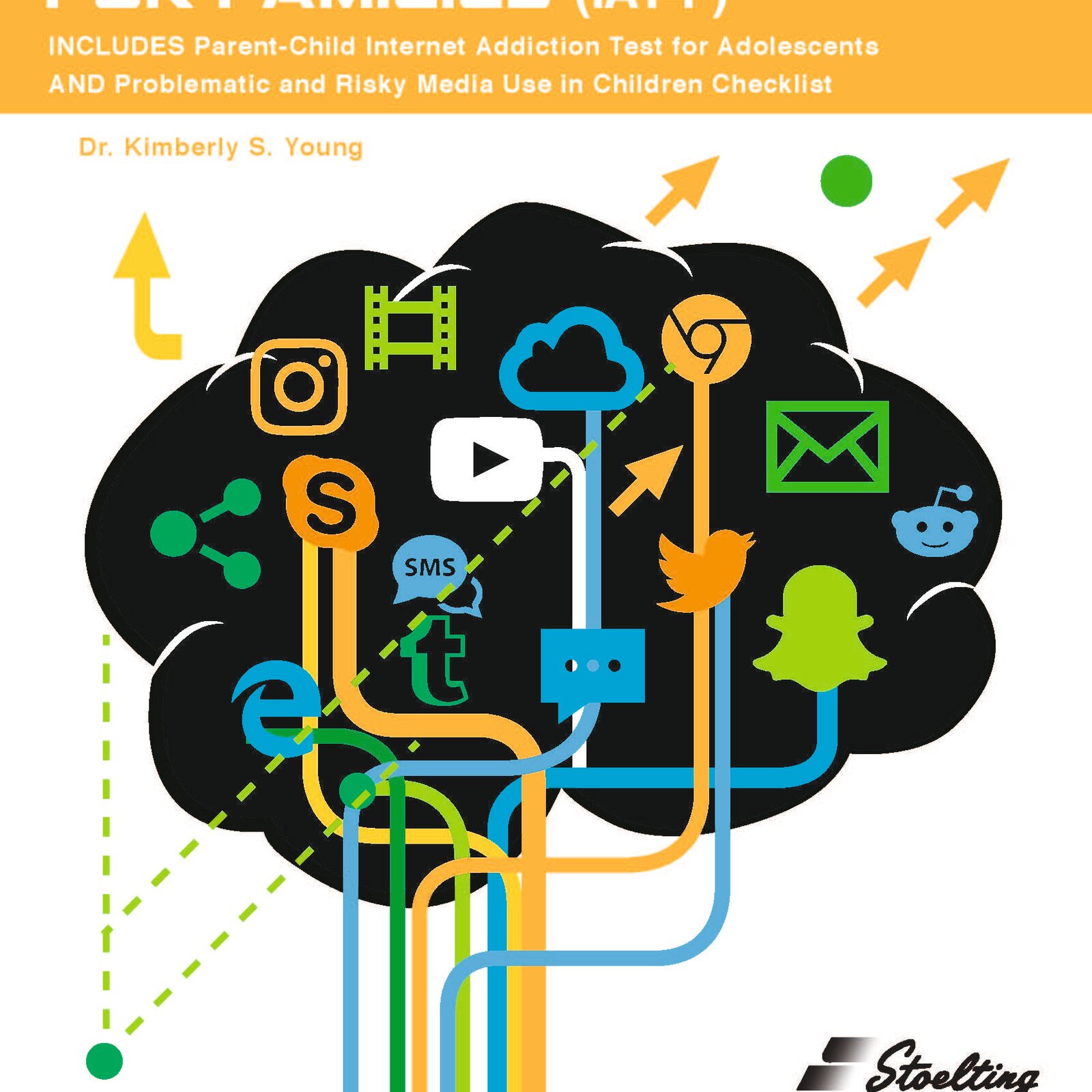Please specify the quantity of product(s).







Internet Addiction Test- Kit (IAT Kit)
| Item | Product | Price | QTY |
|---|---|---|---|
| 30500 | Internet Addiction Test | $65.00 | |
| 30501 | Internet Addiction Test for Families | $65.00 | |
| 30502 | Internet Addiction Test (IAT) Combo Pack | $120.00 |
Internet Addiction Test- Kit (IAT- Kit) NEW!
Measures the presence and severity of Internet and technology addiction, which is now viewed as a clinical disorder, requiring assessment and treatment.
Kimberly S. Young, Ph. D.
Internet Addiction Test (IAT)
Age Range: Middle School through Adult
Time: 5-10 minutes
15 minutes, if administered verbally
Report Format: Self-Report
Restricted Use: A-level
Internet Addiction Test for Families (IAT-F)
Age Range: Elementary School through High School
Time: 5-10 minutes
15 minutes, if administered verbally
Report Format: Completed by Parent or Caretaker
Restricted Use: A-level
While the Internet is a relatively new technology, that has impacted the world, and provided many benefits, it has also had negative ramifications. Individuals unable to control their use are jeopardizing school, employment and relationships. The concept of “Internet Addiction” is used to explain uncontrollable, damaging use of technology. It is characterized as an impulse control disorder, comparable to pathological gambling, because of overlapping diagnostic criteria and symptomatology.
Based on these studies, the IAT was constructed to capture the problematic behavior associated with compulsive use of technology, including online porn, internet gambling and compulsive use of online games and social media.
The Internet Addiction Test emerged as the first validated measure of Internet and technology addiction. The Internet Addiction suite of tests brings together the Internet Addiction Test (IAT) and the Internet Addiction Test for Families (IAT-F). The IAT is a self-report instrument for adolescents and adults. The IAT-F is for children and adolescents and completed by an informant who knows the youth well. Both instruments can be used together in assessment to obtain a well-rounded profile of the client’s Internet addiction and also to identify discrepancies amongst raters, who could benefit from psychoeducation.
The assessments can be administered in a variety of mental health settings, including private practice clinics, schools, hospitals and residential programs. They can be used when there is suspicion of Internet addiction, as part of a broad intake assessment, or for use in a wellness curriculum to help participants evaluate their own Internet behavior. The IAT can also be a valuable pre-employment screening device, to detect internet addiction among job candidates, to improve productivity and reduce corporate liability.
Based on 20 self-report items, the IAT assesses for the presence of addiction to the Internet, electronic entertainment, social media, and general use of electronic devices, and also measures the severity of addiction, in terms of mild, moderate or severe. Furthermore, because Internet addiction may be driven by different reasons and manifest in different ways, requiring different types of treatment, the IAT produces scores related to the following areas:
- Escape
- Compulsion
- Neglecting duties
- Anticipation
- Lack of Control
- Social Avoidance
The IAT-F contains the Parent-Child Internet Addiction Test (PCIAT), a 20-item-questionnaire for adolescents, and the Problematic and Risky Media Use in Children Checklist, an 8-item-checklist for use with children. Both forms may be completed by a parent or other caregiver that knows the youth well. Clinical cut-off scores and severity of addiction qualifiers are provided. The PCIAT also helps identify which areas of functioning are most impaired, among:
- Attention
- Social Behavior
- Aggressive Behavior
All assessment manuals provide information about Internet addiction, research involving use of these assessments, information about interpreting findings, and recommendations for healthy Internet behavior and how to address issues of Internet addiction. Thus, these manuals can serve as the basis for a unit in a wellness curriculum on Internet addiction, as part of a treatment plan addressing Internet addiction, or for psychoeducation in individual or family therapy sessions. Case studies illustrate the application of these instruments and show their utility.
All contact with web-based services is assessed, including:
*Websites
*Internet-based games
*Social media
*Online entertainment
*All types of computers, screens, devices, phones, portable electronic devices and other forms of technology
It has proven to be a reliable measure that examines symptoms of addiction, such as:
*Preoccupation with Internet use
*Ability/inability to control online use
*Hiding/lying about online use
*Continuing online use, despite negative consequences of the behavior
Research
The IAT was researched on a sample of adolescents and adults spanning ages 13 to 67. Statistical analyses found sample size adequate for factor analysis, which was conducted and yielded six factors that the IAT assesses, yielding a score in each domain:
The PCIAT, for use with adolescents age 12 - 18, and Risky Media Use in Children Checklist, for use with children ages 5 - 11, adapted research used with the IAT for use as an informant-report, rather than self-report, checklist. The PCIAT yields overall score levels of how likely Internet addiction is.
The Internet Addiction Test (IAT) is an administration manual containing reproducible copies of the IAT Response Form and Interpretation Form.
The Internet Addiction Test for Families (IAT-F) is an administration manual containing reproducible copies of the Parent-Child Internet Addiction Test Response Form and Interpretation Form and the Problematic and Risky Media Use in Children Checklist Response Form.
The Internet Addiction Test Combo Pack contains both the Internet Addiction Test (IAT) and Internet Addiction Test for Families (IAT-F)
References
Barke, A., Nyenhuis, N., & Kröner-Herwig,B. (2012). The German version of the Internet addiction test: a validation study. Cyberpsychology, Behavior, and Social Networking, 15(10), 534-542.
Bozoglan, B., Kumar, S. Parenting Styles, Parenting Stress and Hours Spent Online as Predictors of Child Internet Addiction Among Children with Autism. J Autism Dev Disord (2021). https://doi.org/10.1007/s10803-021-05324-x
Canan, F., Ataoglu, A., Nichols, L. A., Yildirim, T., & Ozturk, O. (2010). Evaluation of psychometric properties of the Internet addiction scale in a sample of Turkish high school students. Cyberpsychology, Behavior, and Social Networking, 13(3), 317-320.
Cao, F., & Su, L. (2007). Internet addiction among Chinese adolescents: prevalence and psychological features. Child: care, health and development, 33(3), 275-281.
Chang, M. K., & Law, S. P. M. (2008). Factor structure for Young’s Internet Addiction Test: A confirmatory study. Computers in Human Behavior, 24(6), 2597-2619.
Ferraro, G., Caci, B., D’amico, A., & Blasi, M. D. (2006). Internet addiction disorder: an Italian study. CyberPsychology & Behavior, 10(2), 170-175.
Frangos, C. C., Frangos, C. C., & Sotiropoulos, I. (2012). A meta-analysis of the reliability of Young’s Internet addiction test. In World Congress on Engineering (Vol. 1, pp. 368-371).
Ghassemzadeh, L., Shahraray, M., & Moradi, A. (2008). Prevalence of Internet addiction and comparison of Internet addicts and non-addicts in Iranian high schools. CyberPsychology & Behavior, 11(6), 731-733.
Guan, N. C., Isa, S. M., Hashim, A. H., Pillai, S. K., & Singh, M. K. H. (2015). Validity of the Malay Version of the Internet Addiction Test A Study on a Group of Medical Students in Malaysia. Asia-Pacific Journal of Public Health, 27(2), NP2210-NP2219.
Hawi, N. S. (2013). Arabic validation of the Internet addiction test. Cyberpsychology, Behavior, and Social Networking, 16(3), 200-204.
Ismail N, Tajjudin AI, Jaafar H, Nik Jaafar NR, Baharudin A, Ibrahim N. The Relationship between Internet Addiction, Internet Gaming and Anxiety among Medical Students in a Malaysian Public University during COVID-19 Pandemic. International Journal of Environmental Research and Public Health. 2021; 18(22):11870. https://doi.org/10.3390/ijerph182211870
Jelenchick, L. A., Becker, T., & Moreno, M. A. (2012). Assessing the psychometric properties of the Internet Addiction Test (IAT) in US college students. Psychiatry Research, 196(2), 296-301.
Johansson, A., & Götestam, K. G. (2004). Internet addiction: characteristics of a questionnaire and prevalence in Norwegian youth (12–18 years). Scandinavian journal of psychology, 45(3), 223-229.
Kaltiala-Heino, R., Lintonen, T., & Rimpelä, A. (2004). Internet addiction? Potentially problematic use of the Internet in a population of 12–18 year-old adolescents. Addiction Research & Theory, 12(1), 89-96.
Khazaal, Y., Billieux, J., Thorens, G., Khan, R., Louati, Y., Scarlatti, E & Zullino, D. (2008). French validation of the Internet addiction test. CyberPsychology & Behavior, 11(6), 703-706.
Korkeila, J., Kaarlas, S., Jääskeläinen, M., Vahlberg, T., & Taiminen, T. (2010). Attached to the web—harmful use of the Internet and its correlates. European Psychiatry, 25(4), 236-241.
Lai, C. M., Mak, K. K., Watanabe, H., Ang, R. P., Pang, J. S., & Ho, R. C. (2013). Psychometric properties of the Internet addiction test in Chinese adolescents. Journal of pediatric psychology, jst022.
Lam, L. T., Peng, Z. W., Mai, J. C., & Jing, J. (2009). Factors associated with Internet addiction among adolescents. CyberPsychology & Behavior, 12(5), 551-555.
Ngai, S. S. Y. (2007). Exploring the validity of the Internet Addiction Test for students in grades 5–9 in Hong Kong. International Journal of Adolescence and Youth, 13(3), 221-237.
Panayides, P., & Walker, M. J. (2012). Evaluation of the psychometric properties of the Internet Addiction Test (IAT) in a sample of Cypriot high school students: the Rasch Measurement Perspective. European Journal of Psychiatry, 8(3), 327-351.
Pawlikowski, M., Altstötter-Gleich, C., & Brand, M. (2013). Validation and psychometric properties of a short version of Young’s Internet Addiction Test. Computers in Human Behavior, 29(3), 1212-1223.
Siomos, K. E., Dafouli, E. D., Braimiotis, D. A., Mouzas, O. D., & Angelopoulos, N. V. (2008). Internet addiction among Greek adolescent students. CyberPsychology & Behavior, 11(6), 653-657.
Tiego, J., Lochner, C., Ioannidis, K., Brand, M., Stein, D. J., Yücel, M., Grant, J. E., & Chamberlain, S. R. (2021). Measurement of the problematic usage of the Internet unidimensional quasitrait continuum with item response theory. Psychological assessment, 33(7), 652–671. https://doi.org/10.1037/pas0000870
Tsai, C. C., & Lin, S. S. (2003). Internet addiction of adolescents in Taiwan: An interview study. CyberPsychology & Behavior, 6(6), 649-652.
Weinstein A, Lejoyeux M (2010) Internet addiction or excessive Internet use. Am J Drug Alcohol Abuse 36: 277- 283.
Li, W., O’Brien, J.,E., Snyder, S. M., & Howard, M. O. (2015). Characteristics of Internet Addiction/ Pathological Internet use in U.S. university students: A qualitative-method investigation. PLoS One, 10(2)
Widyanto, L., & McMurran, M. (2004). The psychometric properties of the Internet addiction test. CyberPsychology & Behavior, 7(4), 443-450.

